Making Warqa a.k.a. Brik Pastry
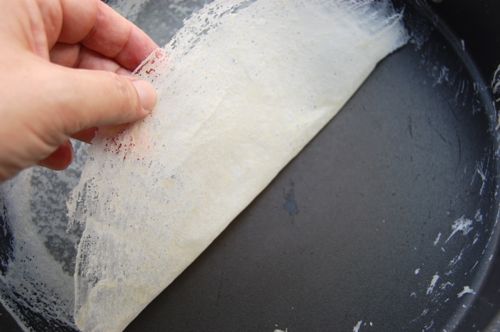
Paper thin Moroccan warqa, used for bastilla and other pastries, is easy once you get the feel of it. The sheets are thinner than phyllo dough, but make a good substitute for those instances when you’re in the mood to impress party guests with an impromptu “You know I make my own pastry, of course!”
Plus it’s fun to do. Provided you have a large, flat pan to paint the batter on, the only thing you need is a broad brush. A new nylon or polyester paint brush from the hardware store will work just fine. Start by assembling your ingredients. Whisking the dry ingredients together…
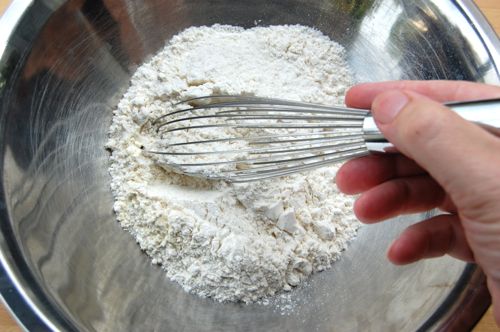
…then the wet ingredients…
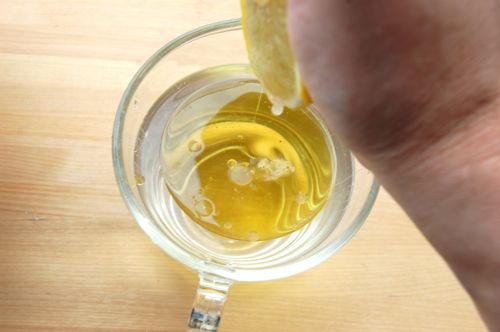
…and combine them, whisking thoroughly.
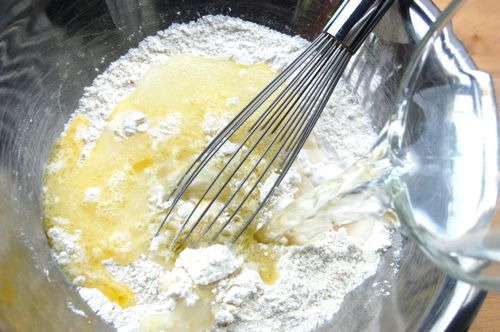
The batter should be extremely thin and soupy. When in doubt, add a little more water.
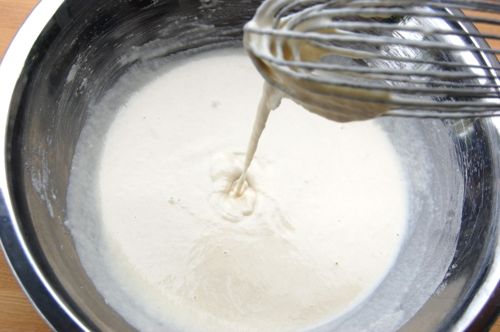
Now then, pour a few inches of water into a Dutch oven or other broad pot. Bring it to a boil.
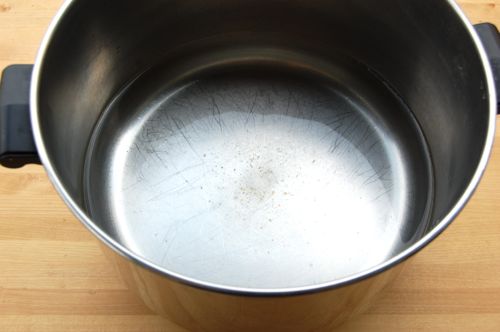
Place over it a larger, flat, nonstick pan. This 11″ sauté pan is perfect for the job. a griddle pan is also a great solution. But the question that begs to be asked is: why cook this way? The answer is because low heat gelatinizes the starch in the batter (cooks it) without drying it out, thereby making it brittle. These sheets need to be flexible if they’re going to be of any use. An electric griddle set to very low heat would probably also work for this.
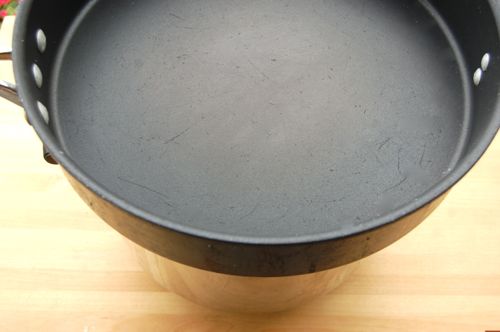
So then, when the pan has heated, dip the brush in the batter and apply it using long, curving strokes. Brush lightly so as not to peel away any batter than might cook on contact. On which note, resist the urge to lubricate the pan. That will cause the cooked batter to clump up and flake off.
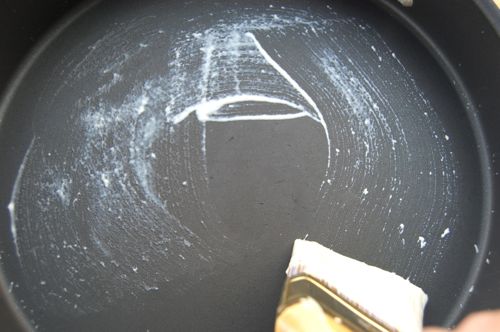
As the batter cooks, very gently dab/brush extra batter onto any bare spots.
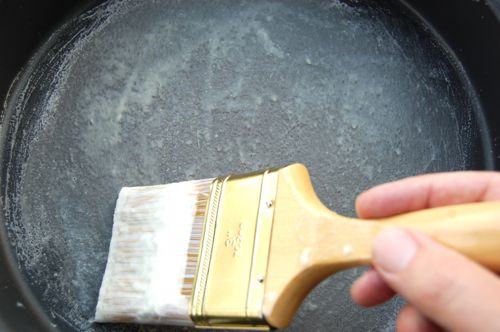
When the sheet looks about like this and is crispy at the edges, it’s ready to pick up. Loosen the edge with a spatula…
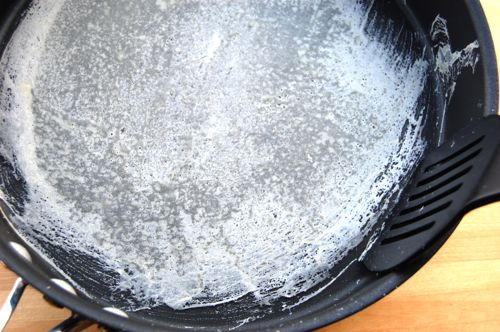
…and just lift it off. The rough edges are unavoidable. You can trim them off, but as they are they broadcast to the world that you are a skilled and worldly epicure, do they not? Leave them.

Place the sheet on your stack, lightly painting it with vegetable oil. Wipe any flecks of batter out of the pan with a paper towel and repeat!
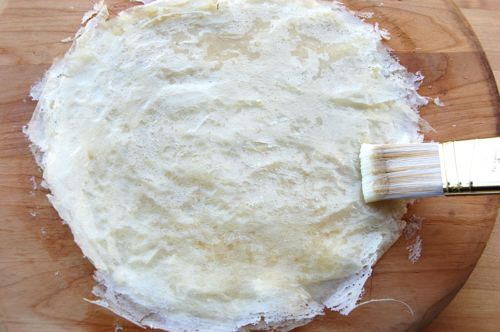
When the batter is all used up (you’ll have about 18 sheets) wrap them up in plastic wrap to keep them from drying.
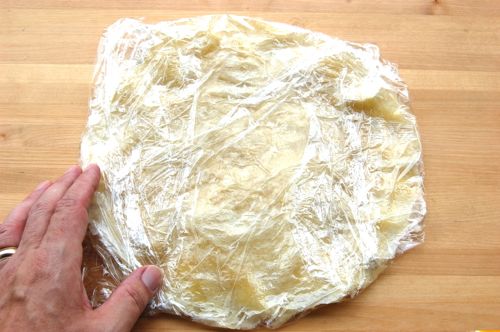
Use them immediately or store them in the fridge if you like for up to five days.
This is so innovative, something like pancakes with a brush, are they meant to stay brittle or do they wilt after cooling down..?
Hey HP! You’d think they’d be very brittle, but they aren’t. They start out quite flexible and only get more so as they cool. You’ll see!
– Joe
this reminds me of something we have in singapore!
http://www.seasaltwithfood.com/2010/06/popiah-skin.html
Thanks so much for that, J! I’ll put this up in a separate post, since this is important for people to see. Some folks out there might prefer to add less water, make a wet dough, and make their warqa this way.
This process reminds me of romali rotis (less popular than naan but much much more tasty) made on an inverted wok surface which results in a lovely soft thin flat bread.
Malini, that sounds almost exactly like the traditional process in Morocco! Very interesting. More evidence that the technique migrated from east to west. Thank you for this note!
– Joe
there is no recipe of ingredients. please supply
Go back and check the post now — and follow the link!
– Joe
Hi Joe,
Im following a recipe by Paula Wolfert and it seems ok but the sheets seem very fragile and as im brushing with oil its like breaking apart. What am i doing wrong?
Hi Cali!
If the sheets are completely brittle when you take them out of the pan there could be a few things going wrong. The heat might be too high, you might not be putting enough batter on the pan, or the batter itself could be too thin. I’d try slightly lower heat first and see if that helps!
Get back to me if you’re still having trouble!
Cheers,
– Joe